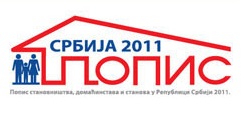Historical overview

Serbia has a well-established tradition of conducting censuses.
The first census was conducted in 1834 in the Principality of Serbia. The subsequent censuses were conducted in 1841, 1843, 1846, 1850, 1854, 1859, 1863, 1866, and 1874. The 1866 Census is considered the first modern census, the one that covered the entire population of the country. The 1874 Census was more extensive and the collected data were presented in lower territorial units (municipalities and districts). In 1878, at the Berlin Congress, Serbia received international recognition of independence, with the territory extended to the Niš, Pirot, Vranje, and Toplica districts. In order to determine the number of people and taxpayers in the new regions, a partial census was carried out in 1879. During the period of the Kingdom of Serbia, six censuses were conducted: in 1884, 1890, 1895, 1900, 1905, and 1910.
In the period between the two world wars, only two censuses were carried out, in 1921 and 1931. The next census was planned for 1941, but due to the World War II it was not conducted. Due to the need to collect data on the damage caused by the destruction of the war in the shortest possible time, in 1948 the so-called "shortened" and in 1953 the first complete post-war census was conducted. Starting from the 1961 Census, in accordance with the recommendations from the United Nations, the ten-year periodicals were established, so the following censuses were conducted in 1961, 1971, 1981, and 1991, respectively.
The first census in the 21st century, planned for 2001, government decided to postpone to 2002, because of the budget crisis. Due to the coronavirus pandemic the last census, planned for 2021, was postponed and conducted in 2022.














